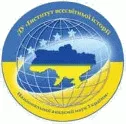Looting of Cultural Property in Europe for the Fuhrer – Museum in Linz
Main Article Content
Abstract
The article analyzes the activities of the Nazi “Special Mission Linz”, its organization and preparations for the opening of the Fuhrer-Museum in Linz. By A. Hitler’s design, Berlin was supposed to become a kind of Rome, and Linz – to become the European capital of world art. Although this museum was never established, its creation project and precious collections, most of which were seized from Jewish families, deserve a great deal of attention, and the connected with it secrets continue to be a concern of mankind. The crucial role in the selection and formation of the creating museum's expositions was played by its leaders. They took charge of future museum and selected for it the most precious items of the looted collections of Europe, coordinating the process of museum’s filling with Hitler.
The author finds out that the Fuhrer-Museum in Linz expositions consisted mainly of art collections of Jews. The main criterion for the selection of valuable pieces of art for the museum was its belonging to the European high art.
The article analyzes the components of the “mission’s” activities, outlines the routes of the artworks, which got into the museum collections in different ways. Besides, significant attention is paid in the article to the key figures: architects whose projects were approved by the Fuhrer, leaders of the museum in Linz – art historians and other executors who were directly involved in organizing and conducting of a large-scale looting of cultural property in Europe. The author notes that the purpose of the “Special Mission Linz”, was, inter alia, to find artworks created by masters of “Aryan” birth. The study emphasizes that such kind of museum establishment was an attempt to prove the greatness and steadfastness of the German Reich. It is noted in the article that Hitler was planning to build cultural centers in Königsberg and Drontheim (Norway) during the war. The Fuhrer wanted to establish a museum with cultural property from Eastern Europe in Königsberg, and the artworks of German authors were supposed to decorate the exposition of the newly created museum in Drontheim – the northernmost center of the future Great Empire. The fact that the Fuhrer-Museum in Linz was never built does not give any grounds to reject the facts of systematic looting and confiscation of cultural property that were conducting during many years of Nazi rule.
Downloads
Article Details
References
Puloy, M.G. (1996). High Art and National Socialism. The Linz Museum as ideological arena. Journal of the History of Collections, 8(2), pp. 201-215. [In English].
Ryudel, A. Marodery. Kak natsisty razgrabili khudozhestvennyye sokrovishcha Evropy [Marauders. How the Nazis plundered Europe’s artistic treasures]. [Online]. Available from: http://loveread.me/view_global.php?id=68012 [In Russian].
Uitter, B. Okhotniki za sokrovishchami. [Treasure hunters]. [Online]. Available from: htps://military.wikireading.ru/44191 [In Russian].
Heuss, A. (1999). Kunst und Kulturgutraub. Eine vergleichende Studie zur Besatzungspolitik der Nationalsozialisten in Frankreich und der Sowjetunion. Universitätsverlag C. WINTER Heidelberg. [In German].
Schwarz, B. (2008). Sonderauftrag Linz und “Führermuseum”. In: Raub und Restitution. Kulturgut aus jüdischem Besitz von 1933 bis heute. (Ss. 127-140). Hrsg.: Inka Bertz - Michael Dorrmann. [In German].
Aksenov, V. (2003). Lyubimyy muzey fyurera. Ukradennyye sokrovishcha [Fuehrer’s favorite museum. Stolen treasures]. Leningrad. Neva. Olma-Press. [In Russian].
Mosyakin, A.G. (2014). Ograblennaya Evropa: Vselenskiy krugovorot sukrovishch [Plundered Europe: The Ecumenical Treasure Cycle]. Moskva: Amfora. [In Russian].
Timofeyeva, T.Yu. & Zakharov V.V. “Osobaya missiya Lints”: muzey. kotoryy tak i ne byl sozdan. Istoriya. personalii. Dokumenty [“Special Mission Linz”: a museum that was never created. History, personalities, documents.]. [Online]. Available from: https://ras.jes.su/nni/s013038640012694-1-1 [In Russian].
Soloshenko, V.V. (2019). Art-diialnist Hildebranda Hurlitta yak viddzerkalennia epokhy natsional-sotsializmu [Hildebrand Gurlitt’s Art Activity as a Reflection of the Age of National Socialism]. Mizhnarodni zviazky Ukrainy: naukovi poshuky i znakhidky [International Relations of Ukraine: Scientific Research and Findings]., 28, pp. 231-253. [In Ukrainian].
Verkhnii Dunai [The Upper Danube]. (1943). Dzvin voli [The bell of freedom], 10, p. 2. [In Ukrainian].
Soloshenko, V.V. (2018). Zakhyst kulturnykh tsinnostei u period viin i zbroinykh konfliktiv [Protection of cultural values during wars and armed conflicts]. Problemy vsesvitnoi istorii: naukovyi zhurnal [Problems of world history: scientific journal], 2 (6), pp. 187-205. [In Ukrainian].
Haase, G. (1991). Kunstraub und Kunstschutz. Eine Dokumentation. Bd. 1. Turleback. [In German].
Soloshenko, V.V. (2021). Istoriia, kultura, pamiat u naukovomu vymiri: stan, perspektyvy [History, culture, memory in the scientific dimension: state, prospects]. Materialy II vseukrainskoi naukovo-praktychnoi konferentsii [Proceedings of the II All-Ukrainian scientific-practical conference]. (Pp. 44-48). Kyiv. [In Ukrainian].
Iselt, K. (2010). “Sonderbeauftragter des Führers”. Der Kunsthistoriker und Museumsmann Hermann Voss (1884-1969). Studien zur Kunst, Band 20. 14 Mai 2010. Köln, Verlag Böhlau [In German].

